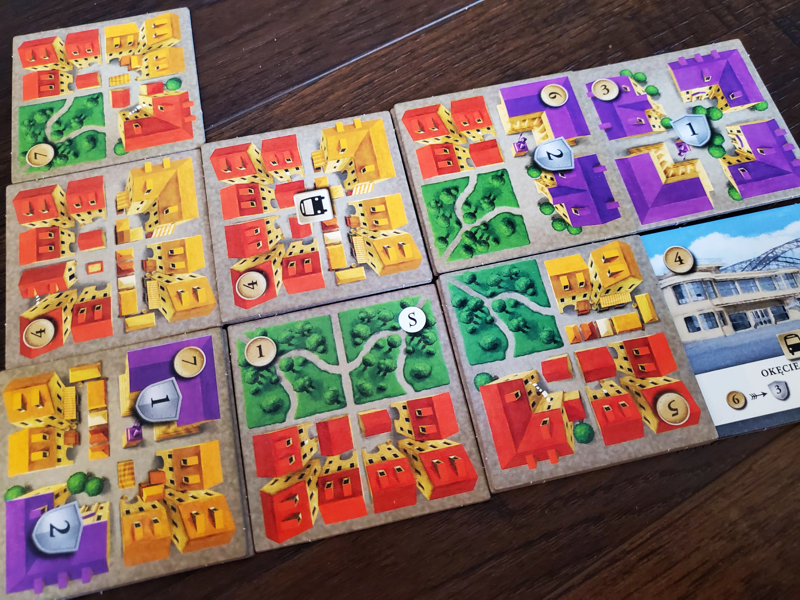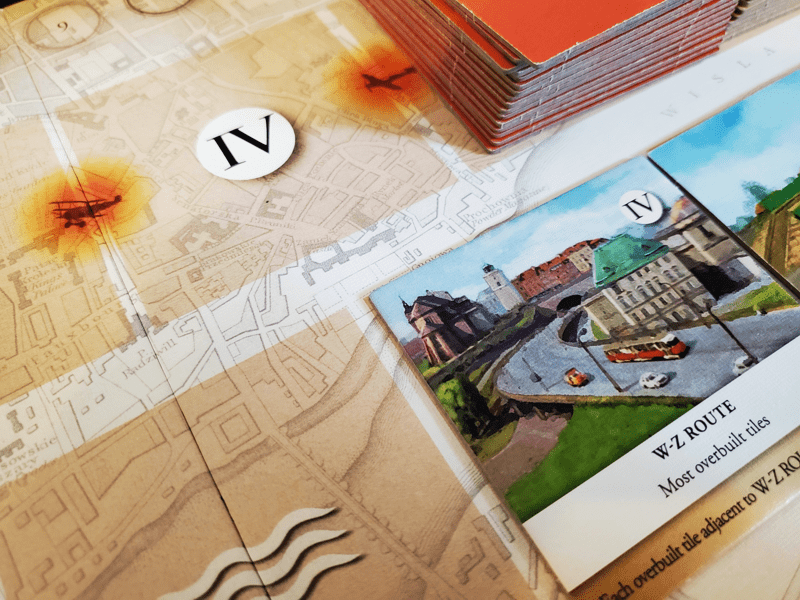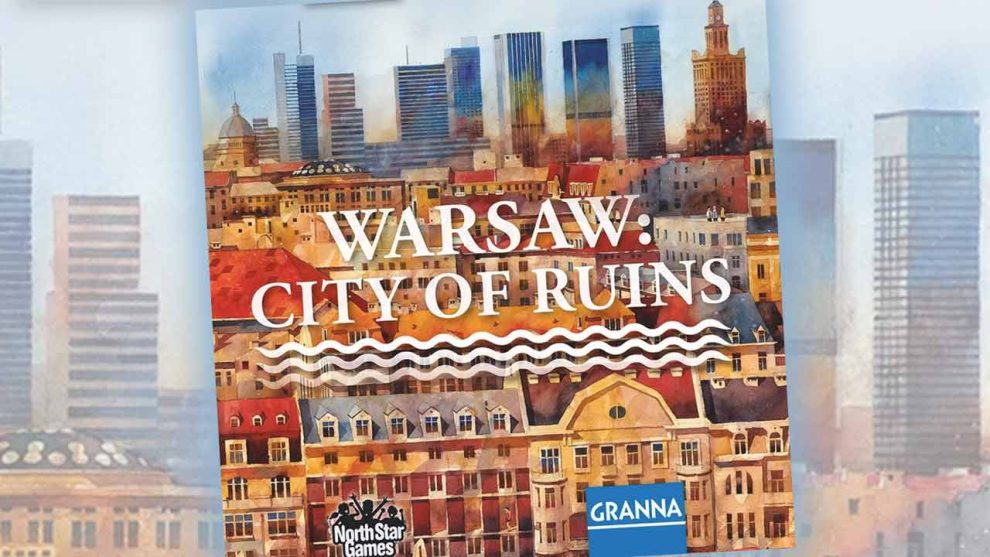A mildly famous fictional teenager once said, Tis but thy name that is my enemy… What’s in a name? That which we call a rose by any other word would smell as sweet.
Oh so true, but names issue forth a curious effect. Though we are instructed not to allow such preliminary matters to form our judgments, we can’t help ourselves. Thematically, tonally, we expect something wholly different from Blackbrim: 1876 than we do from Daring Dustbunnies. Neither moniker is particularly good or bad, but both speak.
Often names are chosen to convey something implicit. There is a reason Cédric Chaboussit went with Lewis & Clark: The Expedition and not Bill & Meriwether’s Excellent Adventure. Still, such intentionality is put to the test as we wonder which we are to view more seriously: Caesar! or Caesar’s Empire? Does it really matter?
Maybe Juliet is right after all. Maybe the name simply can’t be trusted and we must peel back the shrink and punch the chits to unearth the character of a game.
When I first caught a glimpse of Warsaw: City of Ruins—formerly known as Capital—I was intrigued. The name suggests a certain straight-faced stoicism and unflinching grit. The Polish blood that runs through my family tree ran toward the chance at exploring the history and characterization of the capital city.
This tile-laying city builder comes from the mind of Filip Miluński (Divinus, Destinies) and the teams at North Star Games and Granna. Players build and rebuild Warsaw over six epochs that range from the 17th century to the modern day, highlighting especially the destructive and transformative impact of two World Wars.
But there is more to this game and this city than the name might suggest.
Collapsed
The square tiles of Warsaw: City of Ruins depict an overhead view of four city blocks. Each block has a type and dominant color: Parks (green), Residential (red), Commercial (yellow), Industrial (blue), Cultural (purple), and Milestones, which are designated as grey. Several tiles also feature transportation icons.

Players will assemble a 4×3 or 3×4 district by laying tiles orthogonally adjacent into their existing tableau which begins with a Starter tile that is half Park and half Residential. Along the way, they may also lay tiles atop existing tiles, burying the past in the name of progress. When matching blocks rest side by side, they form Areas. Diagonal is not considered adjacent in this city.
At the beginning of the game, tiles belonging to each of the epochs are shuffled and placed on the central board in their designated locations. Five numbered reward tiles are randomly flipped and set in place as well. Each player receives their Starter tile, a reference tile, six coins, and a Mermaid to mark their score on the central board.

Tiles are acquired in Warsaw via drafting. In each epoch, players begin with four tiles from which they choose one, passing the remaining to their left or right, depending on the round. They then have two choices: Play the tile into their district, paying the necessary cost, or discard the tile for three coins. Each tile has a cost in the upper left that must be paid in order to add it to the city. In the event the players are building over an existing tile, they subtract the cost of the covered tile from the cost of the new.
At the conclusion of each epoch, the corresponding reward tile is given to one player based on a specific criteria—most Parks, most Milestones, etc.—before scoring. The historic mess comes into play following the third epoch, during which World War I forces each player to discard one tile stack from their grid clean down to the table before the reward and scoring take place. As if that weren’t brutal enough, the fourth epoch brings World War II and the destruction of two tile stacks. Twenty-five percent of a finished district leaves in the blink of an eye. Progress is arrested, replaced by mourning and subsequent rebuilding.

The key to the game is the spatial and thematic relationship of the tiles. Points and income issue forth when the relationships are well constructed. Parks thrive when they are surrounded by multiple Residential Areas. Commercial Areas likewise produce the most revenue when they sit alongside Residential Areas. Cultural Areas give points. Industrial Areas give income, but also penalize Victory points if they are next to Residential Areas. Transport icons score points, provided they are multiple and not adjacent to one another. Milestones grant all manner of conditional blessings of points and coins. All this within a tight little twelve-tile grid!
Following the final epoch’s scoring, coins are converted into Victory points before determining a winner.
But with a rectified spirit
Perhaps the most impressive feat of Warsaw: City of Ruins is the way the game so beautifully demonstrates the ebb and flow of a city over centuries. On the detailed end of the spectrum, the artwork on the tiles gradually changes throughout the game from a simple village to a booming metropolis. Homes rise higher, Commercial fronts glow brighter, Industries exhale darker. Despite the bold colors that delineate the various Areas, the details are not an afterthought and they display a level of care in putting progress on display. Tytus Brzozowski and Grzegorz Molas succeeded in using the artwork to both mechanical and aesthetic advantage.
In addition, the impact of war on the districts cannot be understated. In one game I played, a city that had a thriving Commercial engine was decimated by the consecutive devastation, only to rise again as a beacon of Culture and a near contender for first place. The city’s movement on the color wheel from yellow to purple was unmistakable and a testimony to the way a district can recover from darkness, regroup, and realize a strong identity.

The decision to include the mess of war was probably the most significant thematic and mechanical accomplishment in Warsaw. Removing a single tile hurts. Removing two is like losing a limb. Considering also that the destruction cannot leave a tile unnaturally hanging in the grid, the limitation and sacrifice bring palpable tension to the table. There is a single Milestone tile—the Armory—that minimizes the effect of war on a district should it appear, but the near-universal pain creates a major tactical consideration that deeply affects everyone at the table at some level.
The final two epochs are entirely focused on rebuilding and establishing momentum into the final scoring round—which is typically very lucrative. The scoring throughout the game rolls like a snowball into that sixth and final tally. The players who can best recognize the opportunities will move into the winner’s circle.
I can’t overstate the importance of that twelve tile limit. Once the boundaries are set, so to speak, the pressure to maximize the potential of a rather small district grows immensely. Building up takes over for building out. Sacrifices simply must be made.
Though Warsaw is fun at any player count, I’ve most enjoyed three. There are exactly enough tiles for four players, meaning every tile enters play in that setup. I believe there should always be fun left in the box for next time, so I often prefer counts that leave materials hidden. And while a two-player outing does just that, the game takes on another level of intrigue when one additional drafting hiccup interrupts the passing back and forth. I like the agony of knowing you’ll not see two tiles again from each starting hand—but that you will see one.
That being said, the home stretch can change radically depending on the composition of those last two epochs. Piles of Milestone tiles turn into rampant bonus calculation and high scores. Groups of standard tile types require precise placement and forethought. I would hardly call Warsaw a deeply strategic game, but rather a highly tactical and reactionary endeavor. Victory here is all about responding to the hand dealt and passed with as much tact and hope as possible.
For what it’s worth, one final word of cautionary praise comes for the insert. I cannot deny the wasted space inside, but functionally I love the way the team organized the insert such that discarded tiles are organized as they are discarded. I truly appreciate games that come to and leave the table without a sweat. Warsaw rivals 7 Wonders: Architects for ease, and that’s saying something.

So what’s in a name? Warsaw: City of Ruins, as a phrase, gives the impression of gloom. But the bright colors, architectural progress, and the highs and lows inside obliterate that impression with more than a healthy dose of excitement and glory to overshadow the ruin. Warsaw is indeed a city built on top of itself in layers following the weight of centuries, but there is a resiliency on display that shines like a gorgeous light. There is sweetness in the ending, an overcoming of tragedy and a celebration of accomplishment.
As of today, I would lay Warsaw: City of Ruins atop the other tile-laying affairs I’ve played. Stunning simplicity. Delicious tension. A meaningful story. An experience that weighs a little more than you might expect, tastes much sweeter than the name implies, and lasts just long enough to be substantially satisfying.











